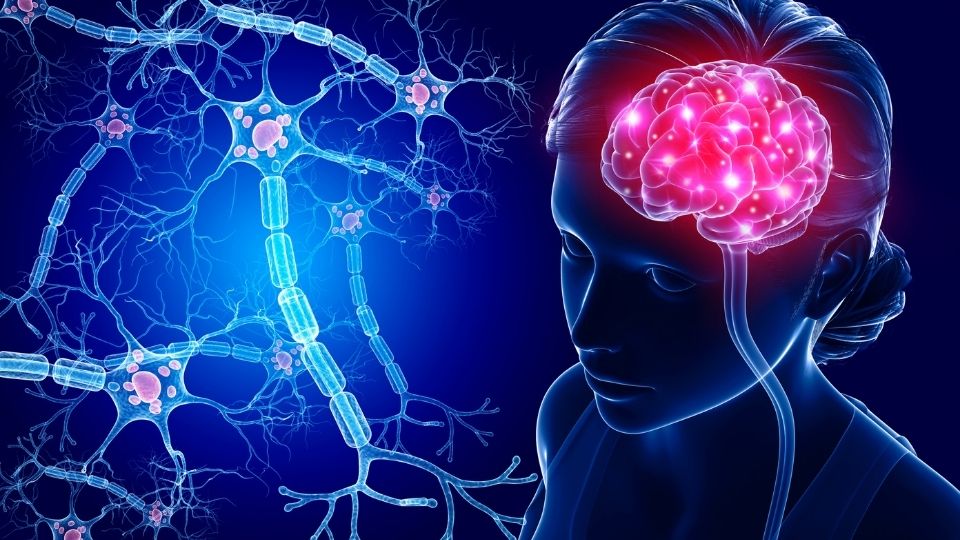Psychological Stress Among Risks for Alzheimer’s Disease

What Is Stress?
Stress is a normal part of life. None of us gets through life without stress. “Stress” is how the human body and mind respond to anything that creates some kind of threat or danger (Selye, 1956). There are many kinds of events or experiences in our lives that can create stress – we call these “stressors.” Even positive events can create stress, such as getting married, retiring from one’s lifelong career, moving to a new home, and so on. There are also many possible negative stressors, include experiencing a chronic or terminal illness, deaths of loved ones, financial losses, or coping with adversity and trials suffered by other family members.
One chronic health condition that is influenced by long-term exposure to stress is Alzheimer’s disease (AD). AD is the most common form of dementia, making up roughly two-thirds of all dementia cases (Alzheimer’s Association, 2016). In AD, changes occur in the brain that damage and destroy nerve cells and prevent the nerve cells from sending signals to each other. A variety of exposures and experiences during life are thought to play a role in causing, or at least accelerating, such brain changes that result in AD. Long-term exposure to psychological stress is thought to be one such risk factor. We’ll expand on this topic below, but first, let’s discuss stressors and how our bodies react to such experiences.
Experiencing a stressor vs. reaction to that stressor. There is an important distinction when discussing stress – the difference between “objective” and “subjective” stress. Objective stress is the event or experience itself; for example, being in a car accident is an event, and being a full-time dementia caregiver is an experience, and both are objective stressors, i.e., the reality that an event or experience happened (Lundberg, 2006). Subjective stress is an individual’s own reaction to the objective stressor, including what the person thinks about the level of threat, possible outcomes, and how they might or might not be able to manage or cope (Folkman et al., 1986). What may be perceived as stressful to one person may not be perceived as stressful to another person, as each person’s experiences and perceptions are unique. Let’s take an objective stressor, like sitting in a traffic jam. Some people find this experience very stressful (their subjective stress is high), while others do not find this to be upsetting (their subjective stress is low). Additionally, some life events which are normal when experienced at one life stage (such as childbirth in one’s 20s or 30s) can generate much greater subjective stress if these same events are experienced “off-time” – at life stages where it is not in the norm (such as childbirth as a young teen or in one’s 40s; Neurgarten, 1979).
Whether the objective stressor was totally unanticipated (such as a sudden death of a loved one) or came on gradually giving the person more time to adapt, may also influence the effect on the individual. Scientists do not fully understand whether it is the objective or the subjective stress that has the greater effect on brain health and dementia risk, but it is likely that both play a role. An individual’s personality may also influence his or her subjective stress. An anxious person, who is a constant worrier, may have higher levels of subjective stress, simply because he or she perceives events as more distressing.
Stress can help us develop resilience. Researchers have found that some exposure to stress is good for us and helps to develop “resilience” (Masten, 2007; Ryff et al., 1998). Some people will cope better in late life if they have experienced stressors at younger stages of life, because they have already developed good coping strategies. Others who have not developed resilience may be more vulnerable to late-life stressors. In some cases, this can be because they were never really “tested,” having had a childhood and earlier adulthood relatively free of stress.
What Does Stress Do to Our Brain and Body?
The body’s response to stress. When a person experiences a stressor, a “fight or flight” response occurs naturally in the body (Jansen et al., 1995; Dampney, 2015). Heart rate increases (to make you more able to run away from danger), muscles tense up (to help you fight off an attacker, or the tree about to land on you), and stress-related hormones like adrenalin are pumped into your brain (to make you more alert and able to respond to the threat). This survival mechanism is at play with wild animals as well, such as the zebra being chased by a lion on the African savannah. The difference between zebras and humans, however, is that the zebra’s body quickly returns to normal once the immediate threat is over (the lion catches some other zebra so is no longer hunting for more zebras to kill). However, humans can be in this heightened state of stress response over much longer periods of time, especially if they are experiencing negative stressors that are long-lasting or chronic, such as extreme poverty or an abusive relationship (Sapolski, 2004).
During times of stress, the body releases cortisol and other stress hormones to the brain. Although these hormones are beneficial in helping the person respond to short-term immediate stressors, lasting minutes or maybe hours, they can be damaging to the brain when experienced over a longer timeframe lasting weeks, months or years.
Studies have shown that such chronic stress from long-term stressors that are not well managed, have the effect of killing brain cells in the area of the brain called the hippocampus, which is responsible for learning and memory. The loss of brain cells in this area, puts the person at higher risk of later developing Alzheimer’s disease and other dementias (McEwen, 1999; McEwen, Nasca, & Gray, 2016).
Stress effects can accumulate over time… and put you at risk for dementia and other illnesses. There are a number of factors that contribute to risk for AD, many of which are related to heart health and factors that increase dementia risk such as diabetes, high blood pressure and obesity (Whitmer et al., 2005; Kivipelto et al., 2005; Chuang et al., 2014). Another factor receiving more attention in recent years is the long-term effects of psychological stress on brain health (McEwen, et al., 2016).
There are at least two hypotheses as to how and when these stress effects on brain health occur. The “accumulation of risk” hypothesis says that it is not so much the exposure to one stressor at a time that causes problems; rather the small amounts of damage caused by life’s adversities gradually build up, and eventually put people more at risk for illness and disease in later life (Ben-Shlomo & Smith, 1991). The “Barker hypothesis” suggests that exposure to stressors during critical periods of development, even as early as before birth, may have lasting effects on the body, such as putting people at higher risk for chronic diseases, even years later (Lucas, 1991). Research on older people in Utah (Norton et al., 2011) and elsewhere found that death of a parent during childhood–a significant stressor – has been linked to higher Alzheimer’s disease risk in late life (Persson & Skoog, 1996; Whalley et al., 2013). Similarly, being poor during childhood – also a significant cause of chronic stress – is related to higher risk for Alzheimer’s in later life (Turrell et al., 2002; Persson & Skoog, 1996).
Currently scientists believe that there are many causes of Alzheimer’s disease and other dementias. Likely, this exposure to stress in childhood did not cause the disease to occur – however any damage from this stress in childhood probably interacts with other risk factors, making a person more vulnerable to the disease.
Reducing the effect of stress on the brain. While we often cannot avoid the stressors themselves, there is much we can do to reduce the negative impacts that stressors have on our brains. Getting a good night’s sleep can help the brain recover from its daily exposure to stress and stress hormones. Therefore, practices that promote better sleep are recommended: avoid caffeine close to bedtime, and minimize distractions like light, noise and electronic devices.
Another important factor in “buffering” the effects of stress is to be an active part of a healthy social support system (Cohen & Wills, 1985; Wang, Cai, Quian, & Peng, 2014). Both giving and receiving support is a positive way to lessen the impact from stress. This is particularly important for older adults who are geographically separated from family members and less socially active due to retirement or mobility restrictions. People in these circumstances may need to be particularly intentional in maintaining their social networks, since the social integration may not happen without a more deliberate effort.
Additionally, research supports that stress is managed better through specific strategies:
- Manage the objective stressors: Fix those aspects of stressors that can be fixed, without dwelling on those aspects that can’t be fixed. In some situations, avoiding the source of stress, or otherwise reducing your exposure to the stressor, is helpful (Lazarus, 1991; Carver, 2011).
- Manage your subjective stress by focusing on the positive impact from life’s challenges. If you cannot avoid the stressor, you can still manage your reaction to it. Remind yourself of the personal growth you achieved from your prior stressors. Find positive meaning in the things that are currently challenging, rather than focusing on the negative impact from stress. In other words, choose to be the person who does not get upset in a traffic jam! (Baldacchino & Draper, 2001; DeGraff & Schaffer, 2008)
- Change your frame of reference: Many older adults find that by volunteering to help those less fortunate, their own problems and stressors become less concerning, because the focus is “outward” on helping others instead of “inward” (Musick & Wilson, 2003; Van Willigen, 2000).
- Focus on your healthy behaviors: A healthy lifestyle can help individuals better manage stress. In particular, physical activity helps to not only increase oxygen to the brain, it can also promote brain health by helping the brain to have a healthier balance of neurotransmitters – brain chemicals responsible for mood as well as functions of the heart and other body systems (Hurley, Mitchell, & Walsh, 2003; Sun, Norman, & While, 2013; Windle, Hughes, Linck, Russell, & Woods, 2010).
- Talk to your healthcare provider with questions or concerns, especially before making significant changes to your diet or physical activity routine.
Summary
In summary, everyone is exposed to both positive and negative events and experiences across the lifespan. These experiences cause stress, and the stress has both physical and psychological effects on our brains, on our overall health, and on our quality of life. Although some exposure to stress can be good for us, and help us build resilience, there is mounting evidence in scientific studies that stress kills brain cells, increasing the risk for later dementia, particularly if the stress exposure is longlasting and if the person has a very distress-prone personality or uses poor coping strategies. Each person is unique and two people experiencing the same objective stressor may have entirely different levels of subjective stress. However, there are things we can do to help minimize the negative effects of life’s adversities. In the interest of having a higher quality of life overall, as well as protecting our brains from cell damage, we can focus on developing the coping strategies that work best for us. By managing both our exposure to stress, and our reactions to stressors, as well as maintaining positive health behaviors like exercise and sleep, we can adapt to, and even learn to appreciate, life’s challenges, and protect our brain health at the same time. For more information, see: https://www.nimh.nih.gov/health/publications/stress/index.shtml/index.shtml
References
- Baldacchino, D., & Draper, P. (2001). Spiritual coping strategies: A review of the nursing research literature. Journal of Advanced Nursing, 34, 833-841.
- Ben-Shlomo, Y., & Smith, G. D. (1991). Deprivation in infancy or in adult life: Which is more important for mortality risk? Lancet, 337(8740), 530-534.
- Carver, C.S. (2011). Coping. In R.J. Contrada & A. Baum (Eds.), The Handbook of Stress Science: Biology, Psychology, and Health (pp. 221-229). New York, NY: Springer Publishing Company.
- Chuang, Y.-F., et al. (2015). Midlife adiposity predicts earlier onset of Alzheimer’s dementia, neuropathology and presymptomatic cerebral amyloid accumulation. Molecular Psychiatry 2015.
- Cohen, S., & Wills, T. A. (1985). Stress, social support, and the buffering hypothesis. Psychological Bulletin, 98(2), 310-357.
- Dampney, R.L. (2015). Central mechanisms regulating coordinated cardiovascular and respiratory function during stress and arousal. American Journal of Physiology, Regulatory, Integrative and Comparative Physiology, 309(5), R429-R443. Doi:10.1152/ajpregu.00051.2015
- DeGraff, A., & Schaffer, J. (2008). Emotionfocused coping: a primary defense against stress for people living with spinal cord injury. Journal of Rehabilitation, 74(1), 19- 24.
- Folkman, S., Lazarus, R.S., Dunkel-Schetter, C., DeLongis, A., & Guen, R.J. (1986). Dynamics of a stressful encounter: cognitive appraisal, coping, and encounter outcomes. Journal of Personality and Social Psychology, 50(5), 992-1003.
- Hurley, M. V., Mitchell, H. L., & Walsh, N. (2003). In osteoarthritis, the psychosocial benefits of exercise are as important as physiological improvements. Exercise and Sport Sciences Reviews, 31, 138-143.
- Jansen, A; Nguyen, X; Karpitsky, V; Mettenleiter, M (27 October 1995). Central Command Neurons of the Sympathetic Nervous System: Basis of the Fight-or-Flight Response. Science Magazine. 5236 (270).
- Jorm, A. F. (2001). History of depression as a risk factor for dementia: an updated review. Australian and New Zealand Journal of Psychiatry, 35(6): 776-781.
- Kivipelto, M., et al.(2005). Obesity and vascular risk factors at midlife and the risk of dementia and Alzheimer disease. Archives of Neurology. 62(10): p. 1556-1560.
- Lazarus, R.S. (1991). Progress on a cognitivemotivational-relational theory of emotion. American Psychologist, 46(8), 819.
- Lucas, A. (1991). Programming by early nutrition in man. In G.R. Bock and J. Whelan (Eds.). The childhood environment and adult disease (38-55). Chichester: Wiley & Sons.
- Lundberg, U. (2006). Stress, subjective and objective health. International Journal of Social Welfare, 15(s1): S41-S48. DOI: 10.1111/j.1468-2397.2006.00443.x
- Masten, A. S. (2007). Resilience in developing systems: Progress and promise as the fourth wave rises. Development and Psychopathology, 19, 921–930.
- McEwen, B. S. (1999). Stress and hippocampal plasticity. Annual Review of Neuroscience, 22, 105-122. doi:10.1146/annurev.neuro.22.1.105
- McEwen, B. S., Nasca, C., & Gray, J. D. (2016). Stress effects on neuronal structure: Hippocampus, amygdala, and prefrontal cortex. Neuropsychopharmacology, 41(1), 3- 23. doi:10.1038/npp.2015.171
- Musick, M. A., & Wilson, J. (2003). Volunteering and depression: The role of psychological and social resources in different age groups. Social Science & Medicine, 56, 259–269. doi: 10.1016/S0277- 9536(02)00025-4
- Neugarten, B. L. (1979). Time, age, and the life cycle. American Journal of Psychiatry, 136, 887-94.
- Norton, M. C., Smith, K. R., Østbye, T., Tschanz, J. T., Corcoran, C., Schwartz, S., Breitner, J. C. S. (2011). Early parental death and remarriage of widowed parents as risk factors for Alzheimer’s disease. American Journal of Geriatric Psychiatry, 19(9), 814- 824.
- Persson, G., & Skoog, I. (1996). A prospective population study of psychosocial risk factors for late onset dementia. International Journal of Geriatric Psychiatry, 11(1), 15- 22.
- Ryff, C. D., Singer, B. H., Love, G. D. & Essex M. J. (1998). Resilience in adulthood and later life. In J. Lomrantx (Ed), Handbook of aging and mental health: An integrative approach (69-99). New York: Plenum Press.
- Sapolsky, R.M. (2004). Why zebras don’t get ulcers. New York: Henry Holt & Co.
- Selye, H. (1956). The stress of life. New York, NY: McGraw-Hill.
- Sun, F., Norman, I. J., & While, A. E. (2013). Physical activity in older people: A systematic review. BMC Public Health, 13, 449. doi:10.1186/1471-2458-13-449
- Turrell, G., Lynch, J. W., Kaplan, G. A., Everson, S. A., Helkala, E. L., Kauhanen, J., & Salonen, J. T. (2002). Socioeconomic position across the lifecourse and cognitive function in late middle age. The Journals of Gerontology, 57(1), S43-51.
- Van Willigen, M. (2000). Differential benefits of volunteering across the life course. The Journals of Gerontology Series B: Psychological Sciences and Social Sciences, 55(5), S308–S318. doi:10.1093/geronb/55.5.S308
- Wang, X., Cai, L., Qian, J., & Peng, J. (2014). Social support moderates stress effects on depression. International Journal of Mental Health Systems, 8(41). doi:10.1186/1752- 4458-8-41
- Whalley, L. J., Staff, R. T., Murray, A. D., Deary, I. J., & Starr, J. M. (2013). Genetic and environmental factors in late onset dementia: Possible role for early parental death. International Journal of Geriatric Psychiatry, 28(1), 75-81. doi: 10.1002/gps.3792
- Whitmer, R.A., et al., Midlife cardiovascular risk factors and risk of dementia in late life. Neurology, 2005. 64(2): p. 277-281.
- Windle, G., Hughes, D., Linck, P., Russell, I., & Woods, B. (2010). Is exercise effective in promoting mental well-being in older age? A systematic review. Aging & Mental Health, 14, 652- 669.
Authors
Maria C. Norton and Elizabeth B. Fauth
Related Research


 Utah 4-H & Youth
Utah 4-H & Youth





